Mercedes-Benz Vision EQXX Electric Concept 2022
Efficiency is the new currencyAt its heart, efficiency means achieving more from less. This is nothing new – Mercedes-Benz has always strived for efficiency in its vehicles, achieving massive technological strides over the decades. These have benefitted consumers through consistent improvements in fuel consumption, comfort and convenience. However, the imperatives of electric mobility and sustainability have shifted the framework for efficiency.
By making efficiency the new currency, Mercedes-Benz has created a common denominator for quantifying technological development across the board – beyond fuel efficiency alone. As well as meaning more range from less energy, it also means more tangible luxury and convenience with less impact on nature, and more electric mobility with less waste.
The VISION EQXX demonstrates that this is all within reach in a real-world vehicle that pushes the envelope on all fronts. It gives Mercedes-Benz customers a clear insight into what premium efficiency for the electric and digital era looks like and feels like. Beautiful design and intuitive operation enhanced by advanced digital technologies deliver sustainable, long-haul electric mobility that has Mercedes-Benz written all over it. “The XX suffix augments the Mercedes-Benz brand with the X-factor of electric mobility that thinks beyond limitations, and an agile, X-divisional collaborative development approach,” explains Markus Schäfer, continuing: “This enhances the breadth and depth of development skills within Mercedes-Benz AG with highly advanced digital tools as well as industry-leading expertise from a diverse array of partner companies, start-ups and institutions around the world.” "Electric range sounds easy but is a complex technical challenge. The easiest way is to put a bigger battery in the car. However, this leads to diminishing returns due to size and weight. This is definitely not the smartest route and it’s also not the best use of scarce resources. With the VISION EQXX, we're presenting the results of an extraordinary challenge: we pushed efficiency to a totally new level. And we explored new ways to increase the range of an electric car." Joerg Bartels, Vice President for Vehicle Engineering and Overall Vehicle Functions.
Pioneering drivetrain for the electric era – waste not, want notOn any road trip, it’s the car that does the work – soaking up the miles and leaving the driver and passengers to experience the journey. In the long-haul mindset that makes the VISION EQXX so special, efficiency is king. With output of around 150 kW, the super-efficient electric drivetrain (encompassing everything from battery to electric drive unit to wheels) in the VISION EQXX provides the power and stamina underpinning this exceptional long-distance runner. More than a composition of individual parts, it is a work of engineering art in its own right. Tasked with a very clear and specific set of targets, the team set out to create an electric drivetrain with a world-beating combination of efficiency, energy density and lightweight engineering. So, let’s throw in a figure here – 95% efficiency. That means up to 95% of the energy from the battery ends up at the wheels – pure and simple. Compare that to just 30% from even the most efficient ICE drivetrain or around 50% from an average (human) long-distance runner. “One of the best ways to improve efficiency is to reduce losses,” explains Eva Greiner, chief engineer of the electric drive system at Mercedes-Benz. “We worked on every part of the system to reduce energy consumption and losses through system design, material selection, lubrication and heat management. And our fantastic simulation tools helped us find out quickly what works and what doesn’t.” The electric drive unit in the VISION EQXX is a dedicated unit consisting of the electric motor, transmission and power electronics featuring a new generation of silicon carbides. The power electronics unit is based on the one in the upcoming Mercedes-AMG Project ONE hypercar. Battery development at its best in collaboration with HPPRather than simply increasing the size of the battery, Mercedes-Benz and the HPP team developed a completely new battery pack for the VISION EQXX, achieving a remarkable energy density of close to 400 Wh/l. This benchmark figure is what made it possible to fit a battery pack with just under 100 kWh of usable energy into the compact dimensions of the VISION EQXX.
Tasked with pushing the envelope of technical feasibility on all levels, the battery development team also decided to experiment with an unusually high voltage. Increasing the voltage to more than 900 volts proved an extremely useful research tool for the development of the power electronics. The team was able to gather a great deal of valuable data and is currently assessing the potential benefits and implications for future series production. Several more aspects of the battery design add to its exceptional efficiency. For instance, its lightweight lid was engineered jointly by Mercedes-AMG HPP and their chassis partners at Mercedes-Grand Prix. The lid is made from a unique, sustainable composite material derived from sugar-cane waste, reinforced with carbon fibre, as used in Formula 1. The battery also features active cell balancing, which means drawing the energy evenly from the cells while the car is driving – in effect, giving it greater stamina. Overall, the battery weighs around 495 kilograms, including the OneBox. Taking the heat – the innovative thermal management systemThose who paid attention in physics class will know that heat is an energy form in a new guise. It can be your enemy or your friend. The VISION EQXX has an advanced thermal-management system. On the one hand, it preserves the thermal energy and on the other, significantly reduces cooling drag. Both contribute to maximum efficiency. How? The Mercedes-Benz “cooling-on-demand” concept has been further developed for the VISION EQXX not only for optimal cooling based on the prevailing circumstances. The exceptional efficiency of the electric drive unit means it generates only minimal waste heat. This helped keep the thermal management system extremely small and lightweight. The carefully engineered interaction of aero-shutters, coolant valves and water pumps ensures the electric drive unit, comprising the power electronics, electric motor and transmission, maintains the most efficient temperature balance at minimum energy cost. Technically, this system is a combination of an innovative air-flow management system and a cooling plate. The cooling plate is installed in the vehicle floor, enabling it to take advantage of the air flowing along the underside of the VISION EQXX. This is the most aerodynamically efficient way of keeping the electric drive unit cool under normal conditions, allowing the vehicle to gain about 20 kilometres of range in the most aerodynamic mode. Only when the weather is hot or the driving style is “lively” does the cooling system ramp up a notch. Shutters that are normally closed at the front of the VISION EQXX open when things heat up, and send extra cooling air along a system of air guides. The inlets for these air guides are cleverly located along the front bumper’s highest-pressure zone. Conversely, the outlets are in low-pressure zones along the top of the bonnet. The beauty of this “cooling-on-demand” approach is that when the shutters are open, it adds only seven points (0.007) to the drag coefficient. If cooling is required when the vehicle is at a standstill, a backup cooling fan kicks in (thermal-efficiency mode).
Keeping the heat – a heat pump makes the most of ambient and waste heatThe innovative heat pump in the VISION EQXX sucks up heat generated by the drive system and from the ambient air outside to keep the cabin cosy. Its impressive efficiency is a major boost for battery range in colder parts of the world. This multi-source heat pump recovers waste heat from the drivetrain, and has an external heat exchanger that draws heat from the ambient air. Not available in previous Mercedes-Benz heat pumps, this feature increases the operating temperature range. This is especially handy for heating up the cabin quickly and is highly effective at lower temperatures. And to squeeze out every last calorie of heat, it even uses the “evaporator enthalpy” when dehumidifying moist ambient air. Enthalpy is the latent energy released as heat when water vapor in the air changes state from gas to water. Let the sun shine in – more range thanks to solar powerThe sun is the original source of all energy on Earth, but it can take a very circuitous path. So, it made perfect sense for the Mercedes-Benz development engineers to cut out the “middleman” and go straight to the big boiler in the sky for some extra oomph. The electric system that powers many of the ancillaries in the VISION EQXX draws additional energy from 117 solar cells on the roof. It was developed in collaboration with the Fraunhofer Institute for Solar Energy Systems ISE – Europe's largest solar energy research institute. The net result of reducing the energy drain on the high-voltage system is an increase in range. On a single day and under ideal conditions, this can add up to 25 km of range on long-distance journeys. The solar energy is stored in a lightweight lithium-iron-phosphate battery, which supplies a climate blower, the lights, the infotainment system and other ancillaries. Mercedes-Benz and its partners are working towards using solar power to charge the high-voltage system, too.
Design and aerodynamics – a masterclass in conflict resolutionOver long distances on the open road, one of the biggest obstacles to efficiency is staring us in the face – yet we can’t see it. The air may be fresh and inviting, but it wants to hold us in its grasp. Aerodynamic drag can have a big impact on range. On a regular long-distance drive, a typical electric vehicle dedicates almost two-thirds of its battery capacity to cutting its way through the air ahead, which is why the VISON EQXX has an ultra-sleek and slippery drag coefficient of 0.17[8]. The team at Mercedes-Benz has a long tradition of working closely together to achieve stunning design with class-leading aerodynamics, from the W 125[9] in 1937 and the 1938 540K Streamliner to the Concept C111[10] from the 1970s to the current EQS. Another prime example is the Concept IAA of 2015[11], which provided significant inspiration for the VISION EQXX. It was, for instance, the first Mercedes-Benz vehicle to make extensive use of active aerodynamic features to achieve notable improvements in drag coefficient paired with the distinctively elegant lines of Mercedes-Benz design. A huge amount of work went into integrating the painstaking passive and active aerodynamic features into the external form of the VISION EQXX. The remarkable result was achieved on an impressively short timescale. The inter-disciplinary team used advanced digital modelling techniques to reach a compromise that reduces drag while retaining the sensual purity of the Mercedes-Benz design language and the practicalities of a road car. “It usually takes around a year to finalise the form,” says head of aerodynamics at Mercedes-Benz Teddy Woll. “We had less than half of that for the VISION EQXX. Lean, agile processes and mature digital tools make collaborative work far easier, with faster decision-making and more nimble compromises. We also needed fewer models and less time in the wind tunnel.” Despite the practical challenges and the compressed timescale, the success of the collaboration is clearly evident in the sophistication and poise of the exterior design. The surfaces of the VISION EQXX run smoothly from the front, developing powerful yet sensual shoulders above the rear wheel arches. This natural flow concludes with a cleanly defined, aerodynamically effective tear-off edge accentuated by a gloss-black end trim, punctuated by the rear light clusters
Painted in a striking Mercedes-Benz alubeam silver appearance, the body of the VISION EQXX cradles the smooth dome of the greenhouse as it flows elegantly like a water droplet towards the rear. The retractable rear diffuser is a powerful example of the collaboration between design, aerodynamics and engineering – deploying only at higher speeds when the air becomes a considerably tougher opponent. When retracted, it fits seamlessly into the bodywork, preserving the balance, proportions and lightweight aesthetic of the rear end. However, it presented a significant engineering challenge. Standing toe-to-toe with the laws of physics, the development engineers working on it had to ensure this seemingly simple mechanism ticked a number of boxes. As well as functioning in all conditions, it also had to weigh next-to-nothing and instantly retract in event of a rear-ender. The VISION EQXX has a number of less visually obvious, but equally important, active and passive aerodynamic details, such as its small frontal area. It is actually less than that of today’s CLA or even the vehicles from smart. And how many would notice that the rear track is 50 millimetres less than at the front? Another is the air curtain/air breather at the front bumper. This ingenious layout pairs with the wheel covers to remove almost every last whisper of aerodynamic separation from the front wheels. And while all that is going on, air pathways even guide additional cooling air over the bonnet, opening the cooling shutters if necessary. This reduces the interference drag around the mirrors and lowers overall drag compared with a conventional outlet into the underbody.
Despite its small frontal area, the front of the VISION EQXX packs a big design punch. A band of light above the gloss-black grille with rose-gold highlights flows effortlessly into the energy-efficient headlights, evocative of those from the EQS. Each headlight consists of two star-shaped elements, the larger one housing both the low-beam and high-beam light arrays behind a glossy centre lens. This arrangement, paired with the 2D star pattern on the front bumper, offers a preview of front-end design detailing that will feature in future Mercedes-Benz models. Efficient wheels and tyres – optimised for rolling resistance and aerodynamicsOn every car, it is the tyres that form the all-important interface with the road. For the VISION EQXX Mercedes-Benz engineers worked in cooperation with Bridgestone. Together, they took advantage of Bridgestone’s Turanza Eco tyre combined with lightweight and environmentally friendly ENLITEN and ologic technology enabling ultra-low-rolling-resistance. The beautiful simplicity of lightweight interior designMarking the launch of a new, super-purist design style, the VISION EQXX represents a new expression of efficiency in interior design. In a departure from the conventional design approach, the interior layout focuses on just a few modules and the beautiful simplicity of lightweight design. This is expressed through the absence of complex shapes and the integration of lightweight structures into the interior aesthetic in a wholly organic way, making traditional trim elements superfluous. From mushrooms to vegan silk, nature’s influence continues when we step inside the VISION EQXX. The lightweight luxury feel of the interior comes from extensive use of lightweight, sustainable materials and organic-inspired design detailing. The basic principle is maximum comfort and style with minimum weight – and absolutely no animal-derived products. The interior features a large number of innovative materials sourced from start-ups around the world. For example, the door pulls are made from AMsilk’s Biosteel® fibre. This high-strength, biotechnology-based and certified-vegan silk-like fabric comes from the inventor of biofabricated (nature-identical) fibre. Combining revolutionary science with true environmental integrity, its use here marks a first in the automotive sector.
Another sustainable material gracing the interior of the VISION EQXX is MyloTM, a verified vegan leather alternative made from mycelium, which is the underground rootlike structure of mushrooms. It is certified bio-based, which means it is made predominantly from renewable ingredients found in nature. This completely new material category created by the power of biotechnology is designed to be less harmful to the environment and is used for details of the seat cushions in the VISION EQXX. The animal-free leather alternative called Deserttex® is a sustainable cactus-based biomaterial made from pulverised cactus fibres combined with a sustainable bio-based polyurethane matrix. In this combination, the leather alternative has an exceptionally supple finish that is extremely soft to the touch. Forthcoming versions have a higher cactus content, giving this material the potential to halve the ecological footprint associated with conventional artificial leathers. On the floor, the carpets in the VISION EQXX are made from 100% bamboo fibre. In addition to being fast-growing and renewable, this natural raw material offers an extremely luxurious look and feel. Mercedes-Benz chose these sustainable, innovative, high-performance materials because they, and others like them, have the potential to replace all sorts of petroleum- and animal-based products currently used in automotive applications. Together, they show a way forward for luxury design that conserves resources and is in balance with nature. Elsewhere, the VISION EQXX makes extensive use of recycled waste materials, such as the recycled PET bottles used in a shimmering textile to enhance the floor area and door trim. Higher up in the interior, the designers used DINAMICA® made from 38% recycled PET to create a wrap-around effect linking the upper edge of the one-piece screen with the doors and headliner. The interior also features UBQ material, a sustainable plastic substitute made from household and municipal landfill waste. Body-in-white – intelligent, efficient and sustainable through bionic engineering and advanced materialsWhen it comes to lightweight engineering, the best on Earth is Mother Nature. No-one else comes close. Over millions of years, she has honed the finest examples of high-efficiency long-distance travellers – from the Monarch butterfly to the Arctic Tern.
Advanced bodyshell materials deliver progress in lightweight design, safety and sustainabilityThe VISION EQXX features a raft of advanced materials that deliver practical functionality and safety to exacting Mercedes-Benz standards. Several of these materials are currently being used in the development of future production models.
Lightweight design thinking was applied throughout the VISION EQXX. On the chassis, aluminium brake discs reduce the mass significantly compared with cast steel discs. As well as being completely corrosion-free, this brake system designed by Mercedes-Benz Advanced Engineering also reduces brake dust emissions by up to 90% thanks to an innovative coating. Meanwhile, new advanced glass-fibre-reinforced plastic springs developed in partnership with Rheinmetall Automotive remove further weight compared with conventional coil springs. Efficient use of energy and informationThe one-piece display is also highly energy efficient. Its mini-LED backlight consists of more than 3000 local dimming zones, meaning it consumes power only as and when needed in specific parts of the screen.
There is also a system to help you drive more efficiently. From energy flow to terrain, battery status and even the direction and intensity of the wind and sun, the efficiency assistant curates all the available information and suggests the most efficient driving style. This actually enhances the driver’s own senses by providing input on external conditions that the driver himself is unable to feel directly – in the way that, for instance, a cyclist can feel the force of the wind or the extra effort involved to pedal uphill. This sensorial support is further augmented by the ability of the VISION EQXX to use the map data to “see into the future”, anticipating what lies ahead to help the driver take advantage of it in a way that maximises efficiency. A cool orb graphic in the display provides an instinctive overview, underpinned if desired by sound. And if more detailed information is what you want, a series of screens will tell you all you need to know with easy-to-follow visuals and infographics. The influence of current acceleration, gradient, wind and rolling resistance on energy consumption are shown in real time. If it’s a full analysis you want – you got it. Equally, if you’re someone who prefers to travel on a “need to know” basis, the VISION EQXX will keep schtum. The simplicity of the interface is a further development of the Zero Layer concept first used in the EQS, which eases driver-vehicle interaction by dispensing with submenus. The interface is efficient and effective, thanks to intelligence and personalisation. Highly proactive, it shows you what you need when you need it, with an intuitive zoom feature providing access to all functions. Your human road trip sidekick has their own dedicated zoom feature and entertainment zone. And if you prefer to travel alone, this part of the display powers down to save energy. Weaving sound into the equationLastly, the sound system in the VISION EQXX is interwoven into the UI/UX to deliver an impressive 4D experience with exceptional energy efficiency. A typical sound system can be a significant energy consumer, so Mercedes-Benz engineers looked closely at how to optimise the sound experience while minimising energy consumption. This can be done by reducing the degradation that sound waves experience when they are absorbed by or bounce off interior surfaces. Problem solved: reducing the overall number of speakers and positioning them very close to the individual occupants dramatically reduces the distance the sound travels. Two broadband speakers installed in each headrest are paired with a bass exciter in each seat. The VISION EQXX uses the exciters for regular audio output as well as for vehicle sounds, haptic feedback and auditory warning. The efficient pairing of sound and haptic feedback is a highly energy-efficient way of increasing perception and awareness through the use of more stimuli. As well as reducing energy consumption, the layout of sound system in the VISION EQXX also facilitates multiple different sound zones. The efficiency assistant takes advantage of the sound system to communicate its recommendations to the driver via a series of intuitive audio “cues”. These were inspired by the cues used by Formula E motor racing to help the drivers perform more efficiently. [1] Electrical consumption has been determined on the basis of Commission Regulation (EU) 2017/1151 according to WLTP
SOURCE Daimler Benz Media Archives Wallpapers : Mercedes-Benz Vision EQXX Electric Concept 2022 (click on image to enlarge)
|
||||||||||||||||||||||||||||||||||
|---|---|---|---|---|---|---|---|---|---|---|---|---|---|---|---|---|---|---|---|---|---|---|---|---|---|---|---|---|---|---|---|---|---|---|
|
||||||||||||||








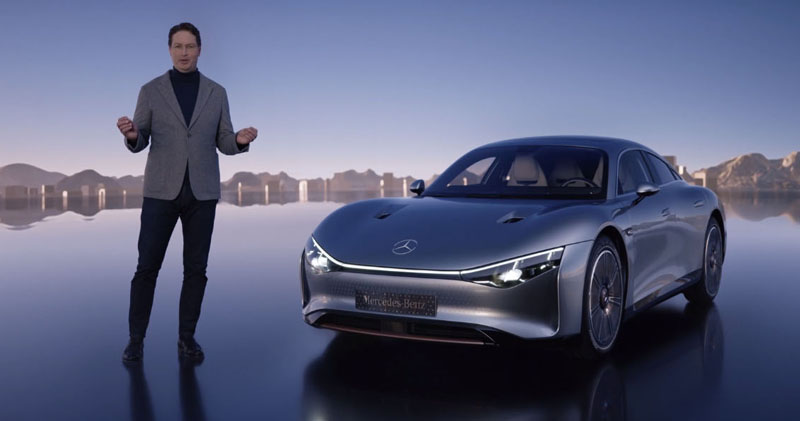
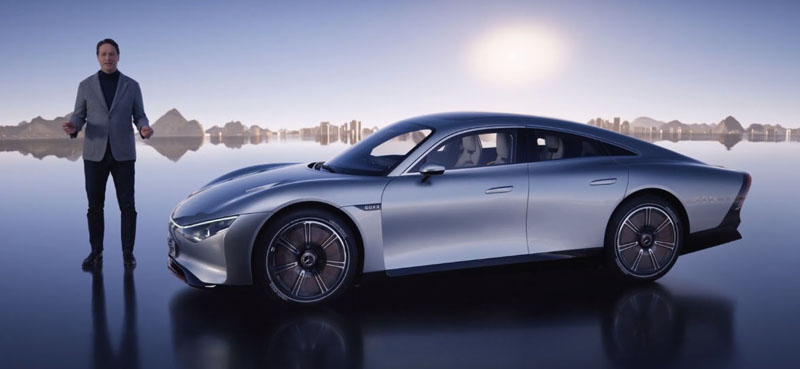
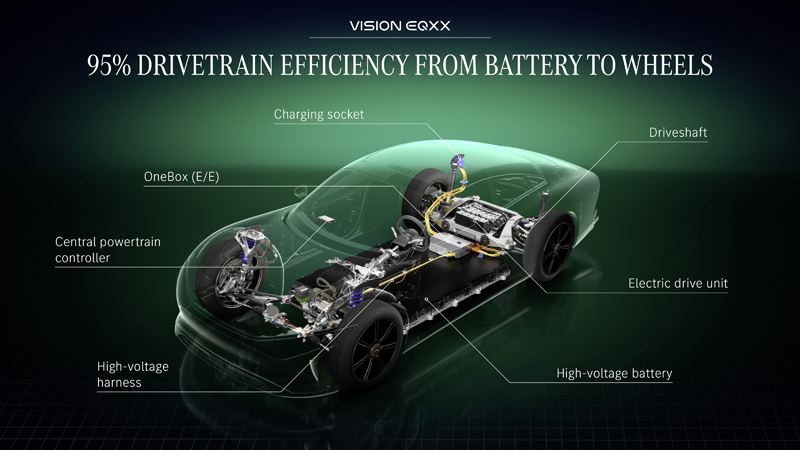
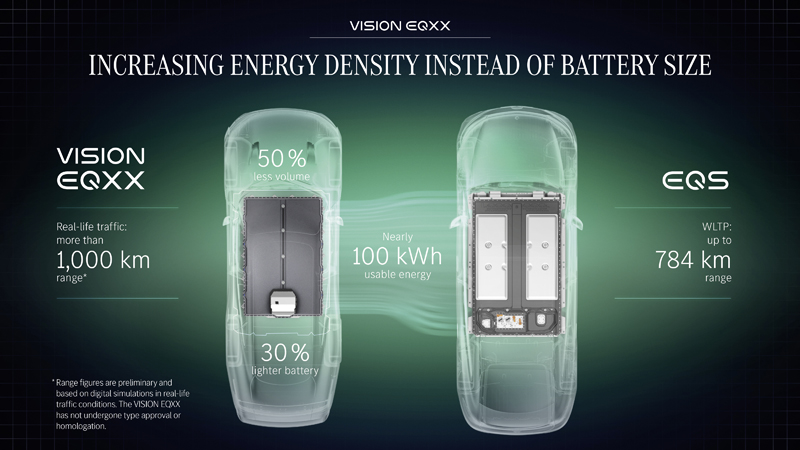

.jpg)
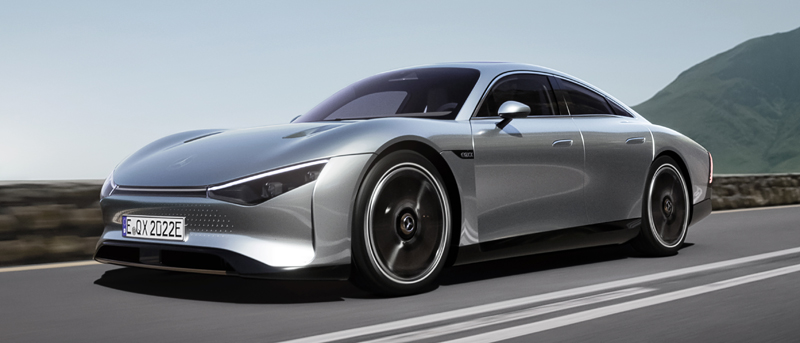
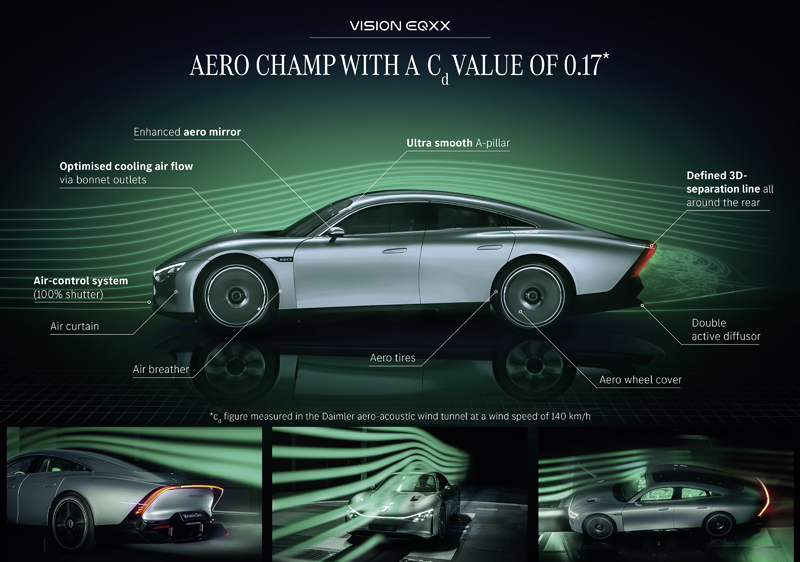
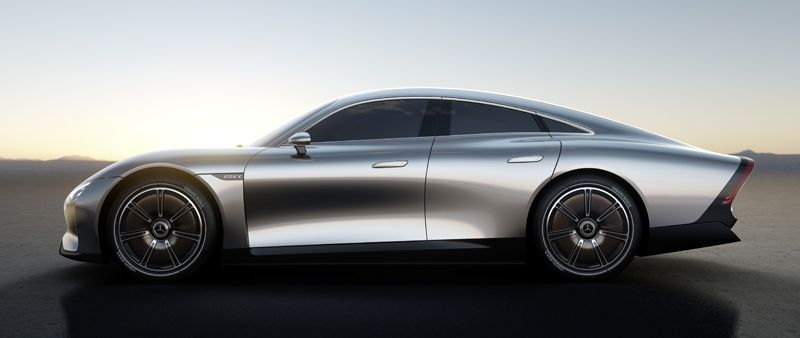
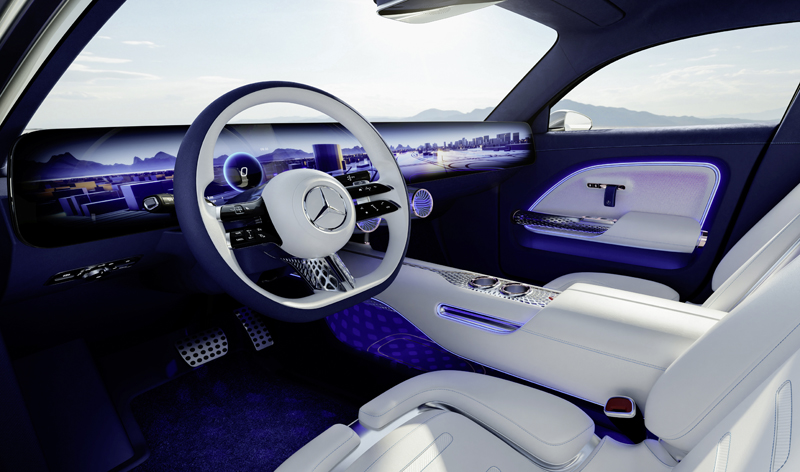
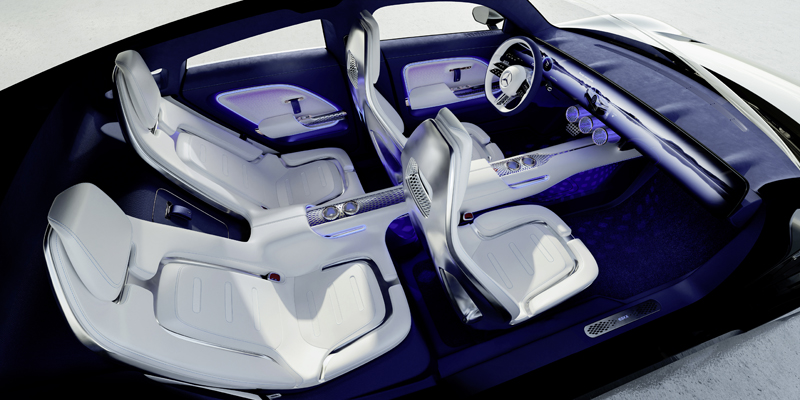
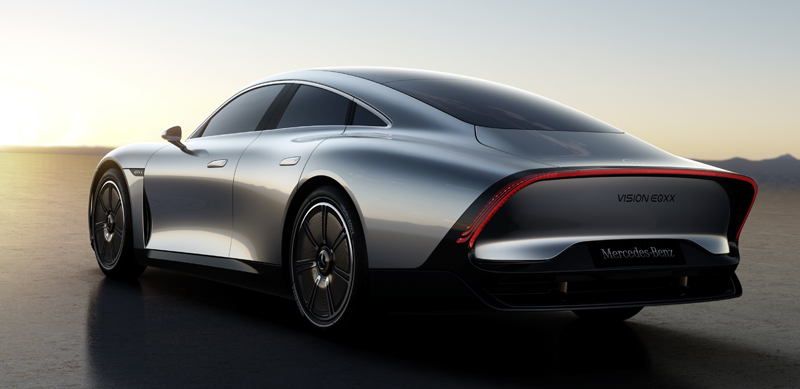
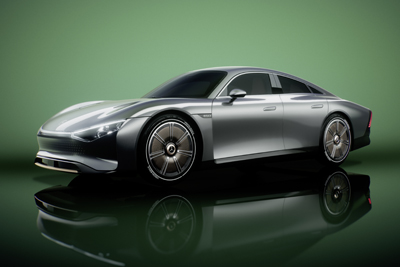
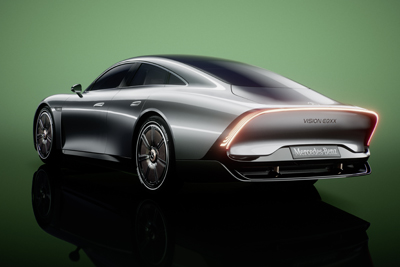
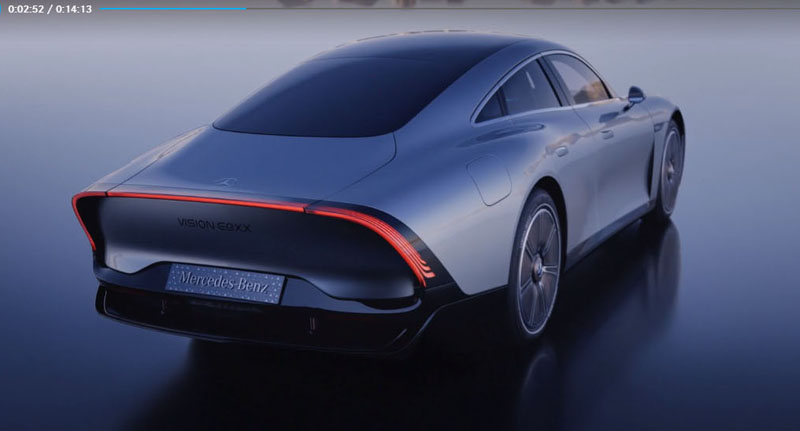





.jpg)





